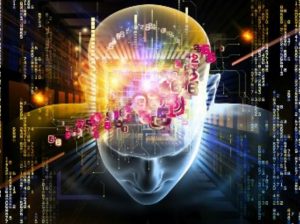Structural change is coming to the banking industry, and it’s coming because of artificial intelligence. Of course, banks can use AI for a range of functions but the area where they are likely to see the most significant impact – both in the way they operate and financially – is in their finance function. In other words, AI is set to significantly change bank operating models.
 This does not apply just to the banking and financial sector. Research has shown that labour productivity across a range of sectors could increase by as much as 40 percent within the next 20 years as a direct result of AI. It will impact – and in some cases completely transform – almost every industry.
This does not apply just to the banking and financial sector. Research has shown that labour productivity across a range of sectors could increase by as much as 40 percent within the next 20 years as a direct result of AI. It will impact – and in some cases completely transform – almost every industry.
Robotic Process Automation
Robotic process automation uses AI and machine learning to automate processes that are rules-based, removing the need for human involvement – or even supervision.
In an article for Forbes titled Artificial Intelligence Is Becoming A Major Disruptive Force In Banks’ Finance Departments, Steve Culp says robotic process automation is the technology that is going to transform banks. He highlighted processes that are formulaic and standardized, i.e. rules-based. The tasks that would benefit most are consolidation, reporting, and reconciliation as they are rules-based but they are currently resource intensive and repetitive.
With robotic process automation in place, resources in the bank could be deployed to tasks which add genuine value to the business.
These are not the only tasks that banks will be able to improve with the use of AI and machine learning, however. AI technologies will in the future be used to improve things like forecasting, financial analysis, and asset allocation.
What Do Banks and Financial Institutions Need to Do?
The benefits of AI in the banking and finance industry are clear – institutions will become more accurate, efficient, and streamlined. All of this will lead to greater profits. Most companies and institutions must have a number of things in place to ensure they maximise the potential of this emerging technology:
· Banks and financial institutions must recognise how significant these changes will be to the industry. They must also recognise that these changes will happen throughout almost every function, process, and task of their current operation. In addition, they must invest now in AI and machine learning technology.
· Banks and financial institutions must also consider their entire business when looking at AI technologies. Old methodologies and ways of working will quickly become obsolete with only those who innovated fastest getting maximum benefit. This goes right to the very core of the bank’s operating model – this is likely to change substantially in the coming years.
· Banks and financial institutions need the people – the talent – capable of planning, designing, implementing, and managing the AI and machine learning technologies required to improve their business. For many, this is likely to be a significant shift from the current talent they seek, so an adjustment will be required.
Big Data and related technologies – from data warehousing to analytics and business intelligence (BI) – are transforming the business world. Big Data is not simply big: Gartner defines it as “high-volume, high-velocity and high-variety information assets.” Managing these assets to generate the fourth “V” – value – is a challenge. Many excellent solutions are on the market, but they must be matched to specific needs. At GRT Corporation our focus is on providing value to the business customer.
Understanding Technical Pumps Failures: Types, Impacts, and How to Avoid Them
Industrial pumps are essential in many sectors, including water and wastewater management, oil and gas, power...



